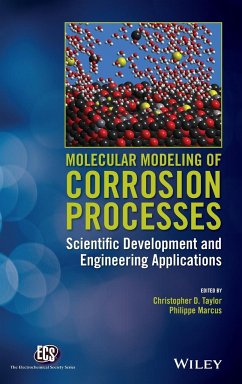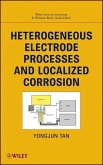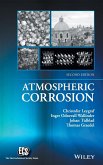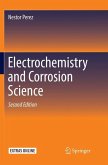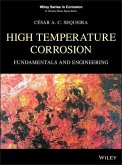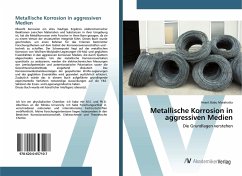Presents opportunities for making significant improvements in preventing harmful effects that can be caused by corrosion Corrosion of metals is a multibillion dollar per year problem. Atomistic and molecular modeling provides the opportunity to apply detailed physics-based simulations of corrosion phenomena for the interpretation of corrosion data produced in the field or in the laboratory. This approach provides an advance over traditional modeling of corrosion using empirical methods by providing a solid basis in terms of the physics and chemistry controlling the mechanisms behind the corrosion of materials. By incorporating insights from atomistic and molecular modeling into lifetime prediction models corrosion professionals can predict well in advance of visual observations or other test methods when various processes will cause a metal to corrode. Moreover, the use of molecular modeling in corrosion simulation can assist in clarifying the corrosion mechanisms, thereby providing corrosion scientists and engineers with a tool that is complementary to benchscale testing and another means for gauging the response of a material to a given set of environmental parameters that may or may not lead to failure by corrosion. Molecular Modeling of Corrosion Processes: Scientific Development and Engineering Applications applies an atomistic/molecular modeling approach to the study of the corrosion of metals. By developing physically grounded models for the fundamental processes that underlie corrosion phenomena, atomistic and molecular modeling offers opportunities for making significant improvements in predicting and preventing the harmful effects that can be caused by corrosion. This book demonstrates how molecular modeling has the potential to yield unique and unprecedented insights into the multitude of interconnected and complex processes that comprise corrosion of metals. In any given environment, numerous competing mechanisms can lead to corrosion. These include competitive surface adsorption, electron transfer via cathodic and anodic processes, dissolution of metals and dealloying, the formation of pre-passive oxide films, localized corrosion and passivity breakdown, the adsorption of inhibitors, and hydrogen embrittlement. This book therefore explains via molecular modeling how these pathways can be individually assessed and compared to one another. The book describes both the strengths and limitations of the current molecular and atomistic modelling toolkit so that the professional interested in using these techniques can determine whether or not a given tool is appropriate for simulating the corrosion phenomenon at hand. The book also can serve as a reference for researchers seeking to build new research programs that will extend the current molecular modelling toolkit into exciting new directions. Molecular Modeling of Corrosion Processes features: Recent examples of applications of molecular modeling to corrosion phenomena throughout the text An introduction to mechanisms and models in corrosion science and engineering Methods such as kinetic Monte Carlo simulation, thermodynamic analysis, simulation of adsorption phenomena, statistical mechanics, and conventional transition state theory Presents current challenges and likely developments in this field for the future Various recent examples of applications of molecular modeling to corrosion phenomena are provided throughout the text. Some of these applications include the molecular dynamics of interfaces, dissolution mechanisms and dealloying, interrogating surface chemistry, properties of passive films, localized corrosion, the metal/metal‐oxide interface, hydrogen embrittlement, stress corrosion cracking, the modeling of corrosion inhibitors, and computational materials discovery. Christopher Taylor Ph.D. is a Senior Researcher in the Research and Innovation Group at DNV GL, and an Associate Research Professor in the Fontana Corrosion Center of The Ohio State University. He is a winner of the Morris Cohen Award given by the Electrochemical Society Corrosion Division. He received his Ph.D. in engineering physics from the University of Virginia. Philippe Marcus is Director of Research at CNRS (Centre National de la Recherche Scientifique) and Head of the Reseach Group of Physical Chemistry of Surfaces at Ecole Nationale Supérieure de Chimie de Paris, France. He is Past President of the European Federation of Corrosion, Fellow of the Electrochemical Society and the International Society of Electrochemistry. He received several international Awards, including the Uhlig Award from the Electrochemical Society Corrosion Division, the Whitney Award from NACE, and the U. R. Evans Award from the Institute of Corrosion.

